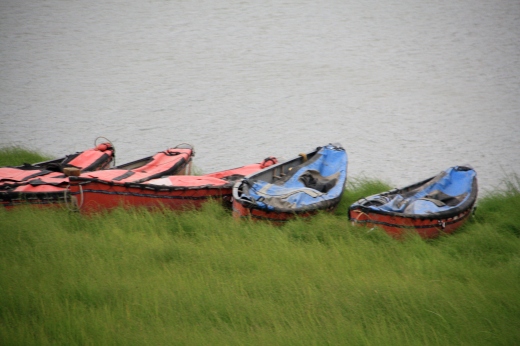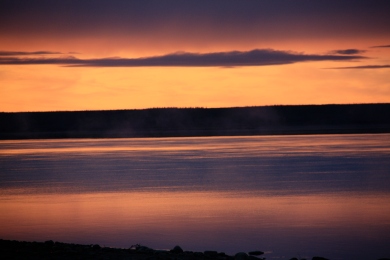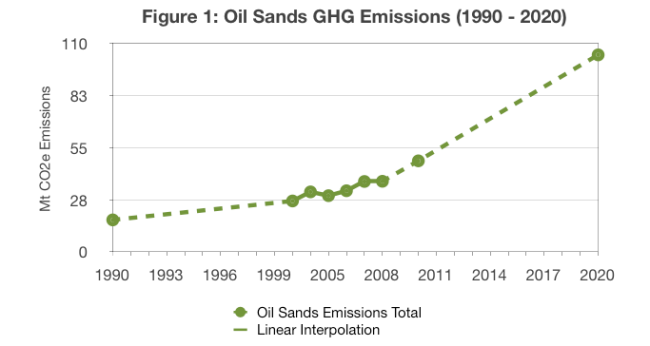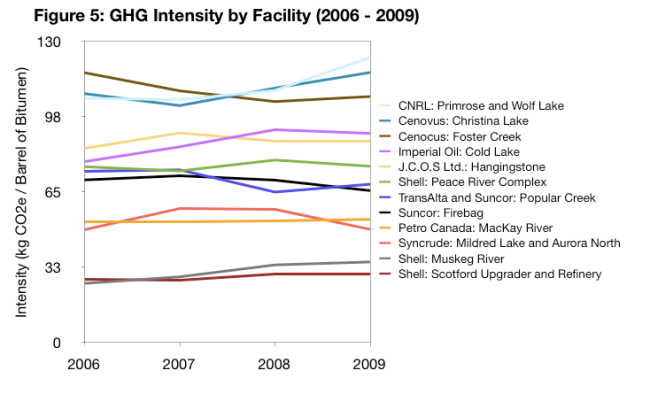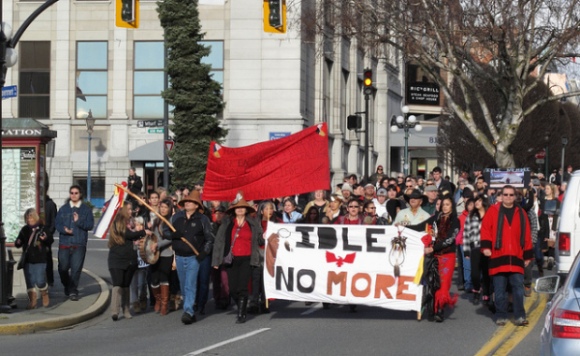Over the summer, an article of mine was published in the Wild Lands Advocate, the journal for the Alberta Wilderness Association. The article detailed my experience leading participants down the Mackenzie River as a summer job in 2009. It was a truly wonderful experience and anyone who hasn’t been to Canada’s north, I suggest you go. The article can be found here, and is pasted below.
Memories of a Northern Summer
By Matthew Dow
It was something that many of us had wanted for a very long time. For others, it was something that sort of just happened – an opportunity that presented itself and was grasped at just the right moment. For whichever reason we were there, it did not really matter because when we reached the river’s banks, we knew it was exactly where we wanted to be that summer.
Camp Chief Hector YMCA is a summer camp and outdoor center that for over 80 years has been devoted to building young leaders through outdoor education. Resting quietly under Mt. Lookout and in clear eye shot of the near famous Mt. Yamnuska, the camp has gradually evolved into an institution in the Bow Valley.
During the school year, hundreds of school kids as week, primarily from the Calgary area, arrive in a world like no other. For some, its their first time away from home for an overnight stay. For others, its the first time in their lives that they have left the city boundaries. For most, its a formative experience in the natural world. Whether hiking, horseback riding, canoeing or even just sitting around a camp fire singing camp fire songs, memories of camp resonate for years.
When the school year ends and July approaches, a wave of energy floods the camp. Over a hundred counsellors, many fresh from a year of academic studies and some originating from countries all around the world, descend on the camp for ten days of intense training on everything from z-drag river boat rescues to consoling a homesick camper. When that first Sunday arrives, hundreds of campers and their nervous parents flood the gates and the place truly comes alive with the spirit of youth. If you have been to camp, whether Camp Chief Hector YMCA or the hundreds of other summer camps across the country, you know the feeling. Its hard to articulate your emotional attachment to the space and when you tell your friends about it, you inevitably just conclude, “it’s a camp thing.” But its for these unspoken reasons that so many of us kept coming back year after year.
When you are a young camper at Camp Chief Hector YMCA, you are among hundreds of other camps but as years go on, the numbers slowly start to dwindle as other life commitments start to take over. It might be the need to get that first summer job, the desire to play competitive sports, or just to simply to hang out with your friends in the city. Whatever the reason, the number of participants shrink in size but the strength of that community only grows more robust with each passing year. By the time the campers are 16, they enter the leadership program which is comprised of both technical skills, including backcountry cooking, hiking, navigating, canoeing among other tasks, but also the “softer” skills including group management, communication, risk awareness and outdoor leadership.
It was in the senior level of that leadership program that we found ourselves that summer. We were ten in all, two leaders and eight campers, setting out for that years Sac Dene trip, a 44 day canoe trip down Canada’s longest river, the mighty Deh Cho (also known as the Mackenzie River). Winding westward and eventually north out of Great Slave Lake, the Mackenzie River travels over twelve-hundred kilometres until it hits the Mackenzie River delta where it divides up into hundreds of channels before eventually dumping out in the Beaufort Sea. Our destination was Inuvik, NWT, which rests along the most easterly channel of the Mackenzie River delta and is roughly one hundred kilometres inland from the Beaufort Sea.
Since we had decided not to rely on any food or equipment drops during our adventure, we had to prepare all the food for ten people for forty-four days. To put this in perspective, this included eighty-two blocks of cheddar cheese that we dipped in paraffin wax to prevent mold, an industrial sized bucket of nuts, an entire thirty litre dry bag of spices, another thirty litre dry bag of cooking oil and margarine, sixty packages of beef jerky, two-hundred sesame snacks, and enough egg powder (dehydrated eggs) that none of us ever want to think about egg powder ever again. We packed this into ten standard sized canoe barrels that weighed approximately one-hundred and twenty pounds each and would account for five days of food for the entire group.
After two days of full driving from Southern Alberta and a short ferry ride, we reached the north bank of the Mackenzie River in the small community of Fort Providence. On the first morning, we dipped the canoes in the water and figured out how to best load our overflowing craft. We attached our specialty canoe wet skirts, lathered up the sunscreen and pushed off with the boats so heavy that the gunnels of the canoe only cleared the water by a few inches. As we paddled away from the community, we had only the stories of past trips to fill our expectations.
The Mackenzie River is truly a mighty beast and although it only has a few sets of rapids that would pose any risk to anyone, its strength rests in it immense ability to move massive amounts of water. The width of the river ranged from ten to twenty kilometers at its widest points to just one kilometer as it enters a section of steep cliffs known as The Ramparts just south of the community of Fort Goodhope. In many instances we found ourselves feeling as if we were paddling a massive lake with no current at all, but at other times, we clocked ourselves at thirteen – fourteen kilometres an hour without paddling.
For everyone on the trip it was our first time north of there Alberta-Northwest Territories border and although in some ways the landscape is very similar to the forests and riparian areas that we had paddled and hiked in years previous, there were very some distinct breaks from our past. One of the most amazing differences that we experienced was the amount of sunlight in the summer months. Of course we knew all about the long days and short nights, but it was far more difficult to comprehend exactly how this would impact our trip.
For some the ability to live in perpetual light, or least in an environment that did not require any artificial light, might not seem significant but in sharing some of our favourite moments in many of the endless discussions we have had together since we returned, so many stories were aided by the long sun filled nights.
One of our favourite memories was when we left the town of Tulita and headed towards the oil and gas town of Norman Wells. We left just after noon since we had met so many wonderful people that had shared their homes, vehicles and traditional games and foods, that we wanted to take some time to thank all those who had helped us. We set out with a strong tail wind and after an hour of paddling, we grabbed our guide tarp and bundled the canoes together. We harnessed the wind with the makeshift sail and were able generate a significant wake while we read out loud and napped under the summer heat. Since we had been able to relax for much our journey that day, we decided to paddle a bit longer than we usually would and we spent the evening glaring into a warm sun reflecting off the water until it eventually dipped down just below the horizon as we pulled into our destination at some point after midnight. As usual, the sunset that night was remarkable but by that point, stunning sunsets had become the norm and hardly worth dragging the camera out of the several layers of waterproofing.
Our canoes bumped into the sandy beach below the cliffs on which the town rested and we set up camp as a well deserved meal was prepared over the camp fire. Back in Alberta it could have been seven o’clock in the evening but by the time everything had wrapped up for the night, it was likely somewhere around two in the morning. Night after night we were treated to the stunning open skies, cool breezes off the river, roaring campfires, delicious meals and the non-stop laughter or our group. But the true lasting memory of this trip is this evocative emotion that sweeps over us whenever we flip through our pictures or pull out the paddle still damaged and worn from the rivers silt and sandy beaches. It is a common cliche but at times, the trip remains is beyond words.
But the reality is, the story that we have tried to detail here might seem simple, mundane or ordinary. We have no doubt that someone who will eventually read this has had a much more grand adventure on a more remote northern river or mountain peak half-way around the world. However, the beauty of wilderness adventure is that it does not matter what other people have done. Though we felt isolated and alone in an untouched environment, we knew that thousands of people have paddled the same river, camped in many of the same campsites, and met so many of the wonderful people that we were able to meet, but this was our trip and the stories we created formed an everlasting bond with each other that will never be broken. Living in the wilderness and enjoying the natural world has this uncanny ability to bring people together, to learn together, to grow together and to share in the most simple things in life that will always bring us so much joy. From the laughs we shared when we would show off our lifejacket tans, or the inevitable inside jokes that never seem to die, we formed a highly effective community that still remains to this day. As our separate lives have taken us across the country from Vancouver to Halifax, we always set time aside around the holiday seasons to reconnect with a family that we built over that summer. We know were given a tremendous opportunity and we just hope that other young people have the same opportunity to build these kinds of memories outdoors because these are the memories that truly last forever.


